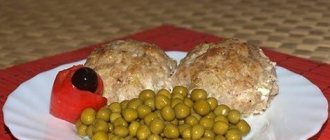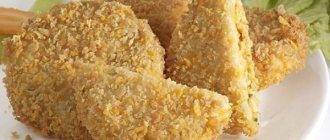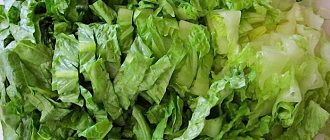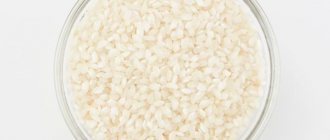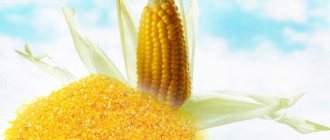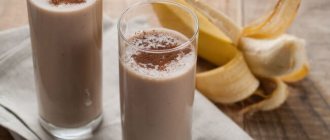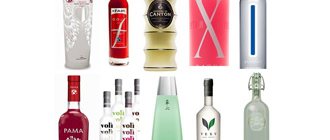Dietary properties of salmon:
If we are not talking about fish, but about a food product, then in this sense, salmon is usually called the meat of fish from the Salmon family.
This fish is a very nutritious product, very tasty and delicious.
As a rule, it goes into food after preliminary processing, but some of the avid fans of seafood claim that the meat of this fish can be eaten raw. What is the benefit of salmon, the calorie content of which interests many of our readers?
The meat of this fish is a source of polyunsaturated fatty acids, as well as omega-3 fats known today, which play a very significant role in regulating cholesterol levels in human blood. This, in turn, has a positive effect on the state of our cardiovascular system, on the functioning of the heart and blood vessels, and prevents the formation of atherosclerotic plaques on the walls of blood vessels.
Proteins or amino acids are essential components of our cells, tissues, enzymes and hormones. Salmon proteins (as well as proteins of any other fish) are easily absorbed by the human body. They have no side effects and do not contain carcinogens. Salmon fish is a source of good fat (omega-3), which also plays a vital role in maintaining our health.
Salmon is also rich in certain minerals. For example, the same selenium that you can buy at the pharmacy, a necessary element for the growth of tissues, hair and nails, is most often obtained from salmon proteins. For the Cardiovascular System While omega-3 acid helps reduce cholesterol, maintains the flexibility of arteries and veins, and enhances cardiac peristalsis, salmon amino acids come into their own. They help reduce blood pressure, have a positive effect on cholesterol levels, and prevent scarring of the walls of arteries and veins, significantly reducing the likelihood of a heart attack.
Eating this fish has a beneficial effect on the functioning of the most important organs: the brain, heart and kidneys. Salmon, due to its composition, reduces the likelihood of developing malignant tumors and serves to prevent strokes, diabetes, arthritis of the joints and Alzheimer's disease.
The minerals from this fish - potassium and calcium - are necessary for the health and strength of the musculoskeletal system. Phosphorus and vitamins B12, A, D are important components for the normal functioning of the liver.
There are some facts that need to be taken into account when talking about the energy value of a fish like salmon. Its calorie content can vary significantly - it depends on the recipe for its preparation. The meat of this fish is included in a huge number of different culinary recipes.
For adherents of a healthy diet, low-calorie methods of preparing salmon are suitable: steaming, frying or grilling. If during cooking you add 1 tablespoon of olive oil, the energy value of the dish will increase by 60 calories.
Product calorie analysis
SHARE OF BZHU IN CALORIES
Ratio of proteins, fats and carbohydrates:
Knowing the contribution of proteins, fats and carbohydrates to calorie content, you can understand how well a product or diet meets the standards of a healthy diet or the requirements of a certain diet. For example, the US and Russian Departments of Health recommend 10-12% of calories come from protein, 30% from fat and 58-60% from carbohydrates. The Atkins diet recommends low carbohydrate intake, although other diets focus on low fat intake.
If more energy is expended than it is received, the body begins to use up fat reserves, and body weight decreases.
Try filling out your food diary right now without registration.
Find out your additional calorie expenditure for training and get updated recommendations absolutely free.
DATE FOR ACHIEVEMENT OF THE GOAL
Atlantic salmon (salmon)
rich in vitamins and minerals such as: vitamin B1 - 15.3%, vitamin B2 - 13.9%, vitamin B5 - 32%, vitamin B6 - 40%, vitamin B12 - 100%, vitamin E - 12%, vitamin PP - 47%, potassium - 16.8%, phosphorus - 26.3%, iodine - 33.3%, cobalt - 200%, copper - 25%, selenium - 66.4%, chromium - 110%
- Vitamin B1
is part of the most important enzymes of carbohydrate and energy metabolism, providing the body with energy and plastic substances, as well as the metabolism of branched amino acids. A lack of this vitamin leads to serious disorders of the nervous, digestive and cardiovascular systems. - Vitamin B2
is involved in redox reactions, helps to increase the color sensitivity of the visual analyzer and dark adaptation. Insufficient intake of vitamin B2 is accompanied by impaired condition of the skin, mucous membranes, and impaired light and twilight vision. - Vitamin B5
is involved in protein, fat, carbohydrate metabolism, cholesterol metabolism, the synthesis of a number of hormones, hemoglobin, promotes the absorption of amino acids and sugars in the intestines, and supports the function of the adrenal cortex. A lack of pantothenic acid can lead to damage to the skin and mucous membranes. - Vitamin B6
is involved in maintaining the immune response, processes of inhibition and excitation in the central nervous system, in the transformation of amino acids, the metabolism of tryptophan, lipids and nucleic acids, promotes the normal formation of red blood cells, and maintaining normal levels of homocysteine in the blood. Insufficient intake of vitamin B6 is accompanied by decreased appetite, impaired skin condition, and the development of homocysteinemia and anemia. - Vitamin B12
plays an important role in the metabolism and transformation of amino acids. Folate and vitamin B12 are interconnected vitamins that are involved in hematopoiesis. A lack of vitamin B12 leads to the development of partial or secondary folate deficiency, as well as anemia, leukopenia, and thrombocytopenia. - Vitamin E
has antioxidant properties, is necessary for the functioning of the gonads and heart muscle, and is a universal stabilizer of cell membranes. With vitamin E deficiency, hemolysis of erythrocytes and neurological disorders are observed. - Vitamin PP
is involved in redox reactions of energy metabolism. Insufficient vitamin intake is accompanied by disruption of the normal condition of the skin, gastrointestinal tract and nervous system. - Potassium
is the main intracellular ion that takes part in the regulation of water, acid and electrolyte balance, and is involved in the processes of conducting nerve impulses and regulating blood pressure. - Phosphorus
takes part in many physiological processes, including energy metabolism, regulates acid-base balance, is part of phospholipids, nucleotides and nucleic acids, and is necessary for the mineralization of bones and teeth. Deficiency leads to anorexia, anemia, and rickets. - Iodine
is involved in the functioning of the thyroid gland, ensuring the formation of hormones (thyroxine and triiodothyronine). Necessary for the growth and differentiation of cells of all tissues of the human body, mitochondrial respiration, regulation of transmembrane transport of sodium and hormones. Insufficient intake leads to endemic goiter with hypothyroidism and slowing of metabolism, arterial hypotension, stunted growth and mental development in children. - Cobalt
is part of vitamin B12. Activates enzymes of fatty acid metabolism and folic acid metabolism. - Copper
is part of enzymes that have redox activity and are involved in the metabolism of iron, stimulates the absorption of proteins and carbohydrates. Participates in the processes of providing oxygen to the tissues of the human body. Deficiency is manifested by disturbances in the formation of the cardiovascular system and skeleton, and the development of connective tissue dysplasia. - Selenium
is an essential element of the antioxidant defense system of the human body, has an immunomodulatory effect, and is involved in the regulation of the action of thyroid hormones. Deficiency leads to Kashin-Beck disease (osteoarthritis with multiple deformities of the joints, spine and limbs), Keshan disease (endemic myocardiopathy), and hereditary thrombasthenia. - Chromium
is involved in the regulation of blood glucose levels, enhancing the effect of insulin. Deficiency leads to decreased glucose tolerance.
more hide
You can see the complete directory of the most useful products in the application.
The nutritional value
— content of carbohydrates, fats and proteins in the product.
Nutritional value of food product
- a set of properties of a food product, in the presence of which the physiological needs of a person for the necessary substances and energy are satisfied.
Vitamins
, organic substances required in small quantities in the diet of both humans and most vertebrates. Vitamin synthesis is usually carried out by plants, not animals. A person's daily requirement for vitamins is only a few milligrams or micrograms. Unlike inorganic substances, vitamins are destroyed by strong heat. Many vitamins are unstable and are “lost” during cooking or food processing.
Salmon, or salmon (trout), as it is also called, belongs to the fish of the Salmon family. It is considered a delicacy not only because of the refined delicate taste and color inherent in almost all varieties of this species, but also because of the huge amount of useful substances in the composition of the fish.
Most often, salmon is called cage salmon, which is popularly considered red fish. In addition to this, this family includes pink salmon, chum salmon and nelma. In this article we will talk about the most common representative of Salmon and find out how many calories are in salmon depending on the method of culinary processing, its composition, beneficial properties, as well as the possibility of using this fish in dietary nutrition.
https://youtu.be/GxwqayfYRVk
How many calories are in salmon?
So what exactly is the calorie content of this fish? And here it is:
Calorie content of fresh salmon is:
201 kcal per 100 grams of product
Proteins, fats and carbohydrates (BJU) of fresh salmon per 100 grams:
Proteins - 19.9
Fats – 13.6
Carbohydrates – 0.0
How many calories are in this fish, cooked in different ways? Here's how much:
Table of caloric content of salmon (BJU), per 100 grams of product:
| Product | Calories, in kcal |
| calorie content of baked salmon | 203,6 |
| steamed salmon calories | 190,0 |
| smoked salmon calories | 162,0 |
| calorie content of boiled salmon | 153,6 |
| salted salmon calories | 269 ,0 |
| fried salmon calories | 204,68 |
| Grilled salmon calories | 283,0 |
And the nutritional value of this fish, prepared in different ways, is this:
Salmon nutritional value table (BZHU), per 100 grams of product:
| Salmon | Squirrels, gr. | Fats, gr. | Carbohydrates, gr. |
| baked | 16,29 | 14,86 | 0,0 |
| for a couple | 21,6 | 11,5 | 0,0 |
| smoked | 21,5 | 8,4 | 0,0 |
| boiled | 20,2 | 9,22 | 0,0 |
| salty | 21,0 | 20,5 | 0,0 |
| fried | 22,9 | 12,0 | 0,0 |
| Grilled | 20,7 | 22,3 | 0,0 |
How to choose fish
For supermarket customers, salmon is presented in the form of fillets, steaks, fresh, frozen, smoked or canned. Fresh salmon should have smooth and moist skin, silvery scales, and bright red gills. White, gray or green gills are evidence of a very old fish. The eyes of a recently caught carcass are shiny, without a cloudy coating. The freshness of the fish is indicated by its smell: the carcass should smell like the sea. The color of fresh fillet is pale pink. Brownish shades in the flesh indicate old age of the fish; too red meat - the carcass was artificially colored. Salmon steaks should be elastic, fillets should have light veins. After pressing the pulp, it should quickly regain its shape. It is important to eat fresh salmon within a few days of catching it. If this is not possible, it is better to freeze the carcass.
If the choice falls on smoked or salted fish, it is advisable to give preference to the product in vacuum packaging, but do not forget to check the composition - there should be nothing else besides fish and salt.
Recipe? Recipe!
How can you cook this fish? Here are some recipes:
Salmon fried in dough:
Products:
- Salmon fillet – 500 gr.
- Flour - 1 cup
- Eggs - 1 piece
- Light beer – 1 half glass
- Juice from half a lemon
- Salt - to taste
- Vegetable oil - for frying
The fish is rinsed, cut into portion strips, salted and sprinkled with lemon juice. Flour, eggs, beer and salt are mixed to form a dough. Leave the dough for 1 hour. Strips of fish are rolled in flour, each strip is dipped in the prepared dough and placed in a container with boiling oil so that the fish floats in it. Fry portions in oil until cooked.
Serve with fluffy rice or flour products and tomato sauce. It goes without saying that the calorie content of salmon prepared in this way will be greater than, say, steamed or boiled salmon.
Salmon with mustard baked in oatmeal:
Products:
- Oat flakes (traditional “Hercules”) - 4 tablespoons
- Salmon (2 steaks) – 200 g
- Mustard (Dijon) - 2 tablespoons
- Vegetable oil - 1 tablespoon
- Salt - 1/2 teaspoon
- Seasoning (ground black pepper) - 1/4 teaspoon
- Lettuce (leaf)
For ease of preparation, cover the baking sheet with foil. Take the salmon steaks and place them on a greased baking sheet.
Salt, pepper and grease the fish with mustard.
Take oatmeal and generously sprinkle the fish with the flakes.
Place the baking sheet in an oven preheated to 180 degrees for 20 minutes to bake.
Serve the finished fish on lettuce leaves. Bon appetit!
How is salmon good for weight loss?
It may seem strange that a fish as fatty as salmon can be used in the fight against excess weight. However, no one says that there is a salmon diet: this fish is used only as an additional stimulant and an effective assistant in losing weight.
The fact is that salmon meat, a rich source of omega-3, not only improves the condition of the skin, but also speeds up metabolism, which inhibits the formation of cellulite and fat deposition in general.
The principle of operation is based on the fact that the thyroid gland, in order to regulate all metabolic processes, requires a certain amount of iodine every day, which is exactly contained in one serving of salmon. Eating salmon at least 2 times a week will not only help you successfully get rid of extra pounds, but also do it in a good mood.
Of course, you need to remember that eating salmon does not mean cooking it in a frying pan with a lot of oil: every tablespoon of this fat increases the “weight” of the dish by 60 kcal. Low-calorie methods are desirable: use a grill or steamer. If you want to marinate the fish before cooking, pay attention to the content of sugar, sauce, and wine in the marinade: they can ruin your attempt to cook healthy food.
Application
Salted salmon is very often used in slicing, which is convenient for preparing sandwiches or more exotic snacks. Recipes using this product are found in the cuisines of many nations.
The taste of salted salmon goes well with butter; delicious salads and canapés are prepared from it. To save money and get your favorite delicacy, you can prepare salted salmon yourself. There's nothing complicated about it. The fish must be divided into fillet layers, rolled in a mixture of coarse salt and ground pepper. You should also add a little sugar and leave to marinate for a day. Salting time and use of ingredients depends on the preferences of gourmets.
Latest forum topics on our website
- Bonnita / Which is better - chemical peeling or laser?
- Yulia-78 / Are there any results from mesotherapy?
- QueenMargo / What cream covers dark circles under the eyes???
Other articles in this section
| Baked river perch Perch belongs to the commercial fish from the perch family. This is a predator whose main food is small fish. Its habitat is tied to thickets on a calm current, where its prey likes to hide. In size, the average perch becomes about 50 cm in length, gaining weight of about two kilograms. |
| Azov carp Azov carp is a freshwater fish of the Cyprinidae family, order Cypriniformes. Despite the fact that the Azov carp is a freshwater fish species, it is also found in salt water reservoirs, where it forms anadromous forms. Numerous populations of this species live in the waters of the Azov, Caspian, Black and Aral seas, as well as in the Amur River, Lake Kapchagai, freshwater slow-flowing warm reservoirs of Central Siberia and Central Asia. |
| Chum salmon caviar granular Chum salmon is a family of salmon fish. She spawns once in her life, after which she dies, while her average life expectancy is 7 years. Basically, chum salmon lives in sea waters. It has an even silver color, but if it is in the river, the color changes and becomes darker. The fish also has sharp, large teeth. |
| Boiled pink salmon Red fish of the salmon family is highly valued all over the world. The most common today is the small pink salmon. Adults gain weight of 5 kilograms, grow more than 54 centimeters, but rarely exceed 77 cm - it all depends on the habitat of the fish. This fish is fished on Sakhalin, Primorye, as well as in the waters of the Arctic Ocean; it avoids warm waters and hot climates. |
| Herring in sour cream Herring belongs to the herring family, and is widely distributed in various waters. Its nutritional value and taste differ in the method and time of fishing, the type of herring and its further processing. |
More on the same topic:
- Roza Writes, And salmon is quite high in calories! I thought fish had fewer calories.
- Alena writes,
What is the calorie content of boiled salmon? - SergeyS writes,
About 160 kilocalories - Sonya writes:
Most often, salmon is eaten salted. The calorie content of salted salmon is about 270 kilocalories. - PtichkaPevichka90 Writes,
Salmon is considered a fatty fish, which is why its calorie content is as high as for fish. - Karina Writes,
By the way, fish diets are very popular, because by adhering to the diet developed for them, you can lose 3-5 kg of excess weight in 7-10 days. For such diets, fresh, low-fat fish is best suited. It is best to cook it without using olive or sunflower oil in the oven, grilled or steamed.
What kind of fish is this
Salmon is an amazing red meat and delicious fish. It is born in fresh waters, but spends most of its life in the seas. It returns to freshwater only for the spawning period. Scientists never cease to be amazed at the amazing memory of this fish. Salmon recognize the waters where they were born by smell, and only there do they give birth to their own offspring. By the way, after spawning they die.
Biologists distinguish several types of salmon. More precisely, all representatives of this species are classified according to their habitat. Those living in the Pacific Ocean belong to the genus Oncorhynchus, those living in the Atlantic Ocean belong to the genus Salmon, and so-called wild salmon are found in the waters of Alaska.
And if scientists know only one species of migrating salmon in the Atlantic Ocean (), then among the Pacific there are 9 species of salmon (including king salmon, sockeye salmon, coho salmon, and others).
Salmon meat is typically pink, but its color can range from red to orange. The fillet of salmon and sockeye salmon is fattier than that of pink salmon and chum salmon, and coho salmon occupies the golden mean in this characteristic. The largest representative of salmon is Chinook salmon, and the smallest is considered to be sockeye salmon.
Benefits and harms
Having looked at the chemical composition of salmon, let’s summarize why they are good for our health.
Red fish contains a large percentage of easily digestible protein, which affects the formation of muscles and strengthens bones, so it is recommended for the diet of athletes. Protein creates the effect of quick satiety, and the low calorie content and the effect of chromium make it possible to include some salmon dishes in the diet of overweight patients. Protein is good for the functioning of the heart, blood vessels, and maintains healthy hair and nails.
The effect of unsaturated fatty acids (Omega-3), found in large quantities in fish, is invaluable for our health. They prevent the development of cancer cells, lower blood pressure, cholesterol levels, remove blood clots, have a beneficial effect on the nervous system and retina of the eyes, and are useful for diabetes.
The combination of Omega-3 and potassium in salmon, which enriches the brain with oxygen, provides enormous opportunities to combat memory impairment, atherosclerosis and brain disorders. Red fish is used as a prophylactic against Alzheimer's and Parkinson's diseases, for joint diseases, heart attacks and for the prevention of premature aging.
